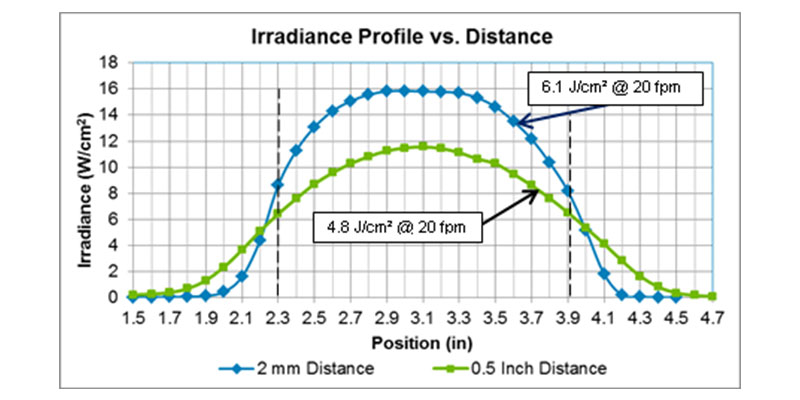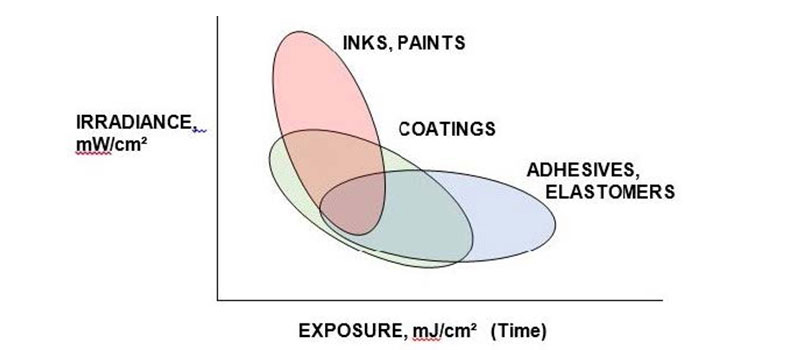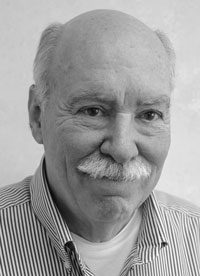Editor’s Note: Dick Stowe has retired as a column writer for UV+EB Technology. His guidance and wisdom in the last four years have been invaluable, and we will miss his contributions. In 2019, Jim Raymont of EIT will become the new UV column writer, and we are excited to have him on board!
A.Ever since the first issue of UV+EB Technology in 2015, R.W. (Dick) Stowe has produced a column to help readers with their curing technology questions. His column consistently has elicited favorable comments from readers. In return, Stowe has invited those readers to submit their questions or ideas for topics, resulting in a lively and informative presentation each issue.
Stowe retired as director of applications engineering for Heraeus Noblelight America LLC in late 2016 and became a UV applications engineering consultant. After much foot-dragging, his friends and editors at UV+EB Technology reluctantly have agreed to allow him a well-earned retirement from the regular column.
In celebration of his work over the past several years, UV+EB Technology is providing a roundup of topics from past issues that readers may want to use as a reference. Most can be found by searching the UV+EB Technology website at www.uvebtechnology.com or with an online search of each column title. Below is a roundup of titles, issues and edited excerpts or synopses:
- Why don’t technical data sheets specify a UV curing system? Issue 1, 2015
Optimizing the design of a curing system only begins with the technical data sheet. Specifications depend on the film weight, the surface to which it will be applied and the UV lamp system or configuration of lamps. - LEDs and radiometers; non-reciprocity and design or QC; radiachromic films. Issue 2, 2015
Column succinctly addresses the three topics in the title. - What is a “cure ladder” and how is it used in UV curing? Issue 3, 2015
The cure ladder, a fundamental laboratory tool for the design or analysis of a UV-curing system, is used to optimize the design of a UV system, ranging from the selection and specification of the UV source to the optimization of a UV-curable formulation – ink, coating, paint or adhesive. - What does “optical thickness” mean, and how can it be measured in the lab? Issue 4, 2015
The optical character of a coating, ink, adhesive or paint combines two factors: spectral absorbance and physical thickness of a curable film. Optical thickness, along with the UV exposure factors of irradiance profile and UV wavelength, is one of the most important characteristics affecting depth of cure, speed and adhesion in a UV-curing application. - Why all the data? Radiometers as diagnostic tools, Issue 1, 2016
Radiometers can provide information on peak irradiance in W/cm2 or mW/cm2 and exposure in J/cm2 or mJ/cm2 in specific wavelength bands – but that’s usually not enough. The need for baseline data, taken when systems are new or refurbished, can’t be overemphasized. - Is there a “quick and easy” way to estimate the UV exposure under a UV LED lamp? Issue 2, 2016
The column provides equations and methods to provide an approximation of the exposure under an LED, or several LEDs, when a dosimeter or an integrating radiometer is not practical or available.

- What’s in a word? Notes on the RadTech UV Glossary, Issue 3, 2016
A glossary of terms, assembled by the UV Measurement Group of RadTech North America, is available at: www.radtech.org/intro-to-uv-eb/uv-glossary. - What is important to monitor in a production UV curing process? Issue 4, 2016
Process monitoring (compared to process development) is based on tracking changes in key exposure factors. Parameters measured must relate to the physical properties of the end product. - How can the orientation of UV lamps in a 3D curing system be described? Issue 1, 2017
Attitude and position – terminology used in flight and aerospace – can be adapted to 3D lamp orientation.
- Which is more important – irradiance or exposure? Issue 2, 2017
Both are important, but the relative effectiveness depends on the physical chemistry of an ink, coating, adhesive or paint – as well as on the optical thickness of the UV-curable material and the properties required in the end application.

- How does temperature affect UV curing? How is it controlled, and how is it measured? Issue 3, 2017
Temperature is one of the four key variables (along with UV wavelength, irradiance profile and speed) of UV curing. This involves the temperature of the ink, coating, paint or adhesive as well as that of the substrate. - Can you comment on surface cure and factors affecting it? Issue 4, 2017
Surface cure of a free-radical system can be affected by spectral absorbance of the curable material, photoinitiator blend and its spectral absorbance, relative UVC content of spectral exposure, photon flux rate (irradiance), oxygen inhibition and functionality of component oligomers and monomers. - Are there different ways to use radiachromic films? Issue 1, 2018
Radiachromic films can be attached to sheets, webs or solid objects, so they can do something probes and paddle radiometers can’t: record the actual exposure of the process. - Where, under a UV lamp, should a radiometer be located for an accurate measurement? Issue 2, 2018
When reporting irradiance data, the best practice is always to clearly state the distance from the MP lamp face to the bottom of the radiometer or from the UV LED window to the diffuser face of the radiometer. Consistency and reproducibility of data are important to process specification or troubleshooting. - Why is there no “standard unit” similar to lighting products for the radiant output of UV lamps? Issue 3, 2018
Organisms, cells, photoinitiators and radiachromic compounds respond to UV, but each in its own range of responsivity or action spectrum. Meaningful measurements are made in different wavelength bands of interest.
Some of Stowe’s other published works include the Printers’ Guide: Radiometry and Methods of UV Monitoring, currently available on the RadTech site at: www.radtech.org/images/printers-guide-new/Radiometry_2016update_PROOF.PDF. In addition, several of his Q&A format articles have been translated into Japanese and posted as PDF files on the Heraeus Noblelight Discovery site. They include:
- How Can the Orientation of UV Lamps in a 3D Curing System be Described?
- Non-Reciprocity of Exposure of UV-Curable Materials and the Implications for System Design
- How does temperature affect UV Curing? How is it controlled, and how is it measured?







